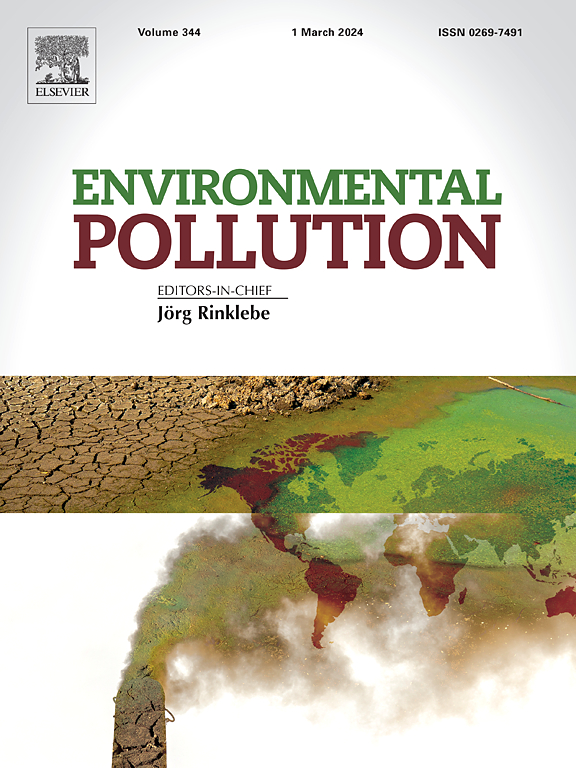Antibiotic erythromycin in fish: Pharmacokinetics, effects, and health risks
IF 7.6
2区 环境科学与生态学
Q1 ENVIRONMENTAL SCIENCES
引用次数: 0
Abstract
Erythromycin is a macrolide antibiotic commonly utilized in veterinary medicine and aquaculture. It functions by binding to the 50S subunit of 70S ribosomes, inhibiting protein synthesis and effectively treating numerous bacterial diseases. Due to the extensive use of erythromycin, it has been detected in various aquatic systems in recent years. Multiple studies have reported the occurrence of erythromycin resistance and its adverse effects on diverse aquatic organisms. Consequently, potential environmental health risks associated with erythromycin have garnered increasing attention. As an integral component of aquatic ecosystems, fish have been the subject of numerous reports regarding the bioaccumulation and adverse effects of erythromycin; however, these data have not been collated and interpreted. This report provides a comprehensive overview of the environmental fate of erythromycin, detection methods, pharmacokinetics, and impacts on fish. In addition to the therapeutic benefits against pathogens, acute or chronic exposure of fish to erythromycin at concentrations ranging from μg/L to mg/L disrupts the primary defense, antioxidant, and xenobiotic metabolism systems, leading to oxidative stress, cellular structural damage, and metabolic disorders, manifesting as cytotoxicity, organ toxicity, neurotoxicity, developmental toxicity, and reproductive toxicity. However, further in-depth studies are warranted to evaluate the therapeutic efficacy at relatively high levels, particularly when considering pathogens with developed resistance to erythromycin, as well as the long-term effects of erythromycin exposure at environmentally relevant concentrations in fish, thereby better assessing the health risks posed by erythromycin to fish and their consumers humans.

求助全文
约1分钟内获得全文
求助全文
来源期刊

Environmental Pollution
环境科学-环境科学
CiteScore
16.00
自引率
6.70%
发文量
2082
审稿时长
2.9 months
期刊介绍:
Environmental Pollution is an international peer-reviewed journal that publishes high-quality research papers and review articles covering all aspects of environmental pollution and its impacts on ecosystems and human health.
Subject areas include, but are not limited to:
• Sources and occurrences of pollutants that are clearly defined and measured in environmental compartments, food and food-related items, and human bodies;
• Interlinks between contaminant exposure and biological, ecological, and human health effects, including those of climate change;
• Contaminants of emerging concerns (including but not limited to antibiotic resistant microorganisms or genes, microplastics/nanoplastics, electronic wastes, light, and noise) and/or their biological, ecological, or human health effects;
• Laboratory and field studies on the remediation/mitigation of environmental pollution via new techniques and with clear links to biological, ecological, or human health effects;
• Modeling of pollution processes, patterns, or trends that is of clear environmental and/or human health interest;
• New techniques that measure and examine environmental occurrences, transport, behavior, and effects of pollutants within the environment or the laboratory, provided that they can be clearly used to address problems within regional or global environmental compartments.
 求助内容:
求助内容: 应助结果提醒方式:
应助结果提醒方式:


